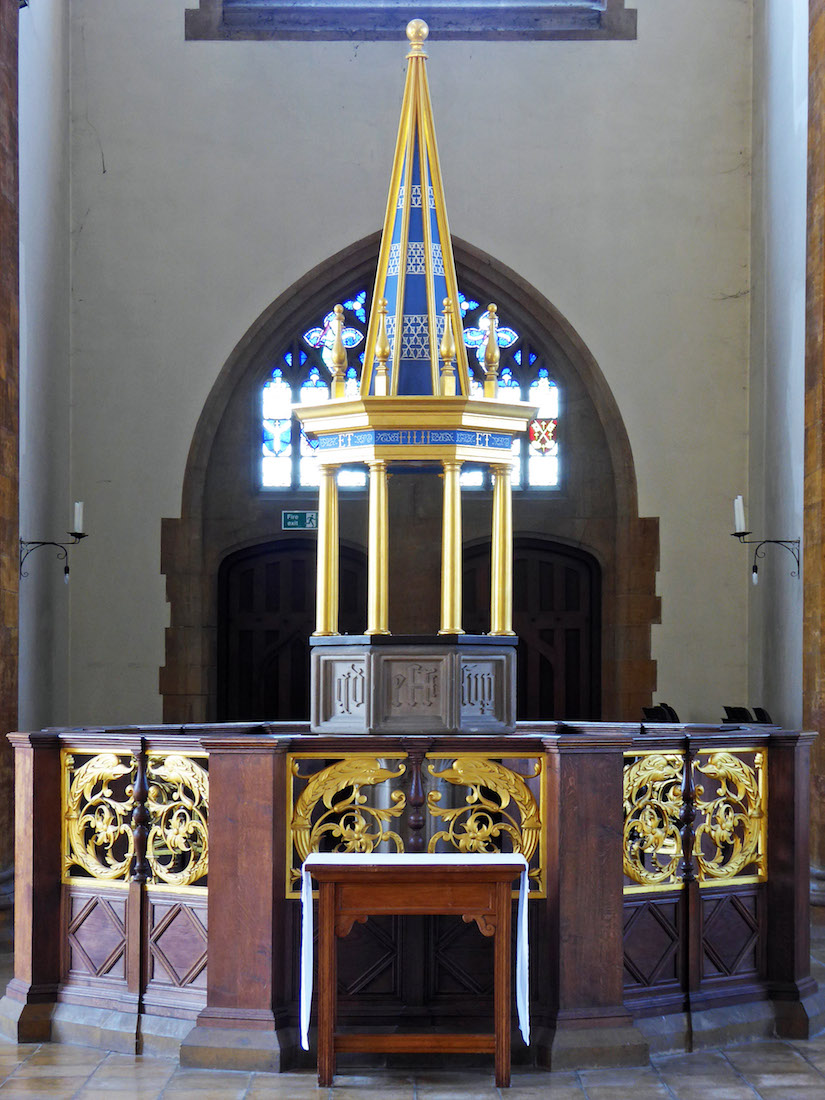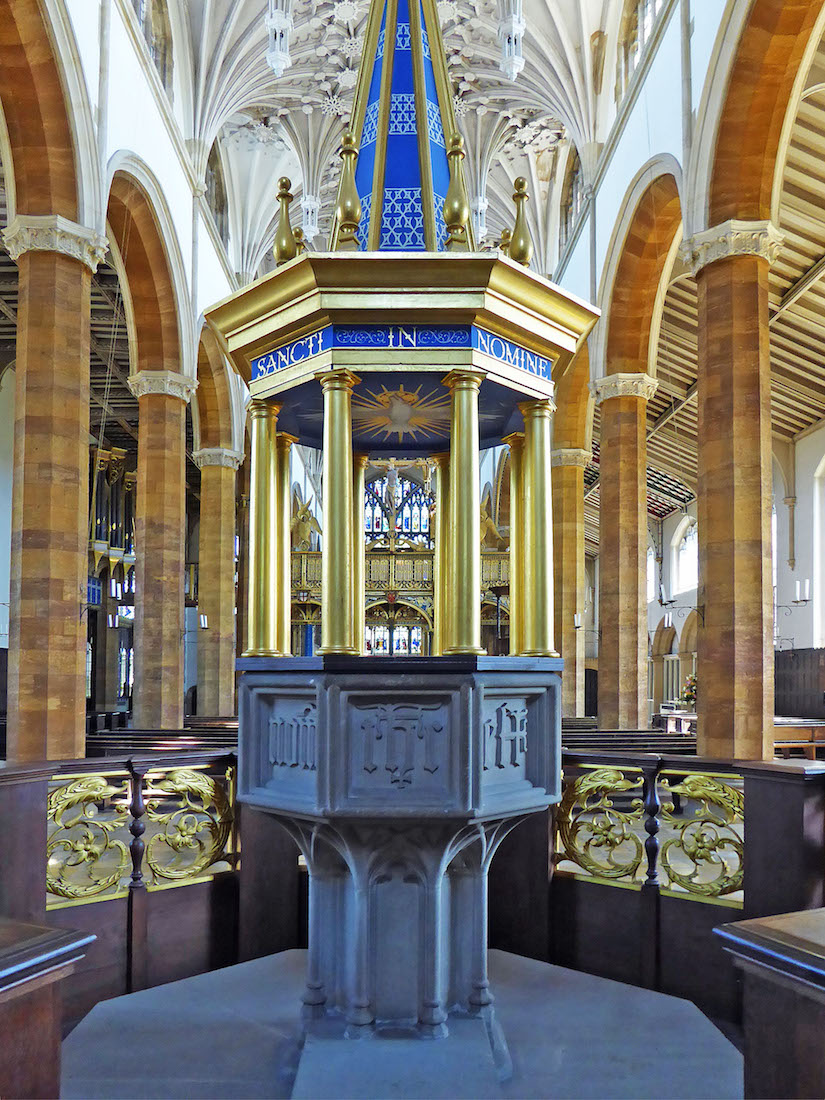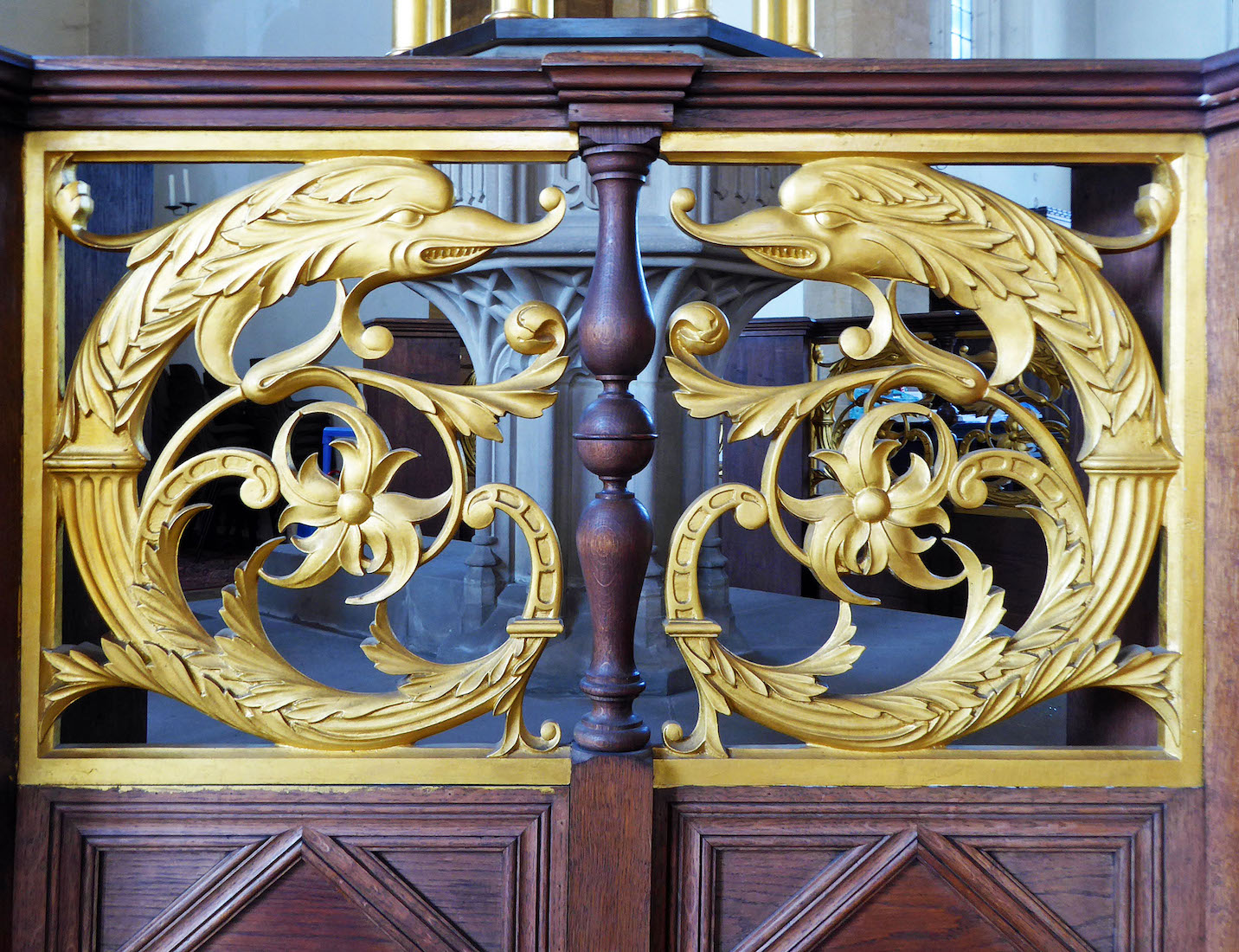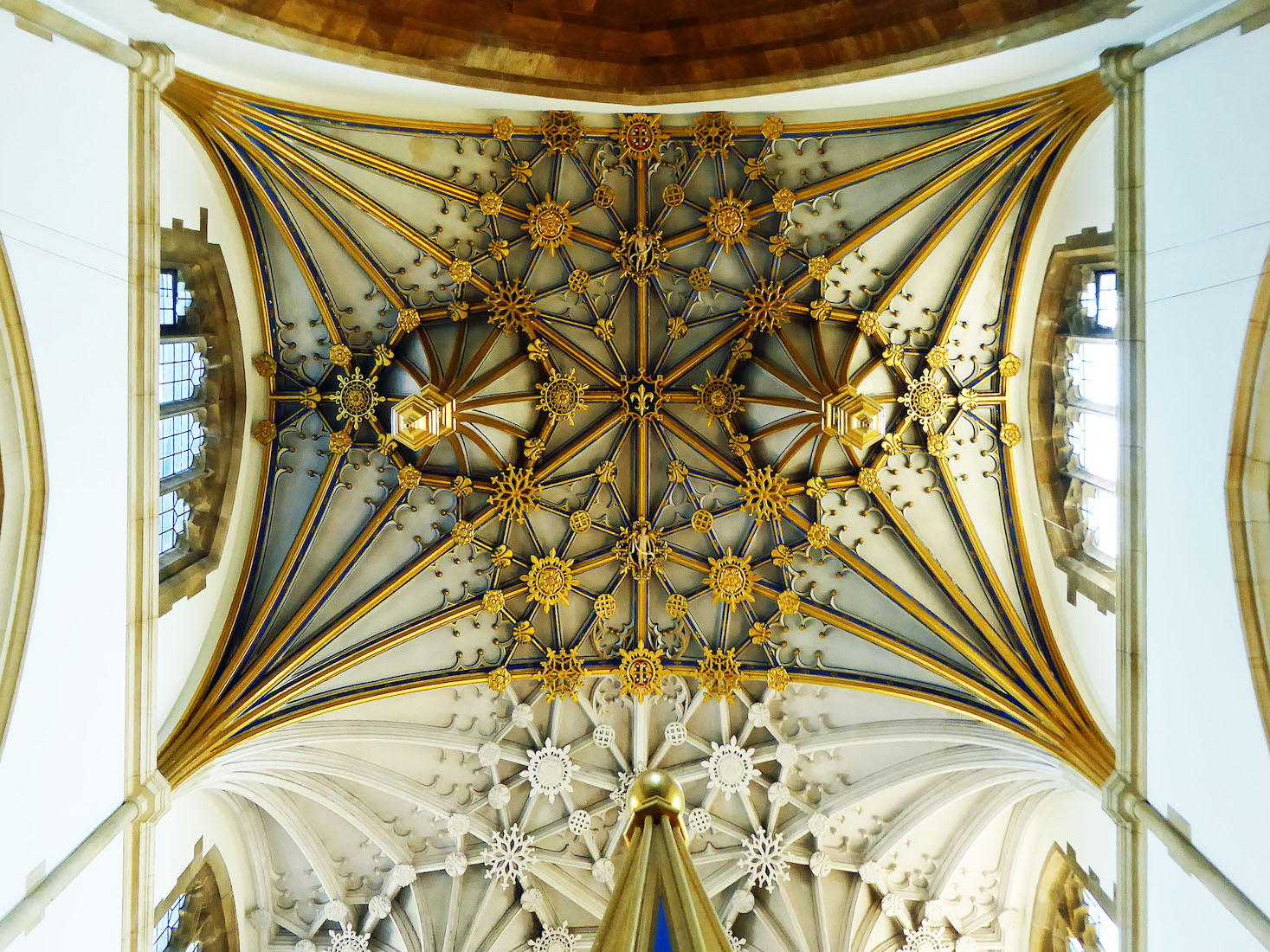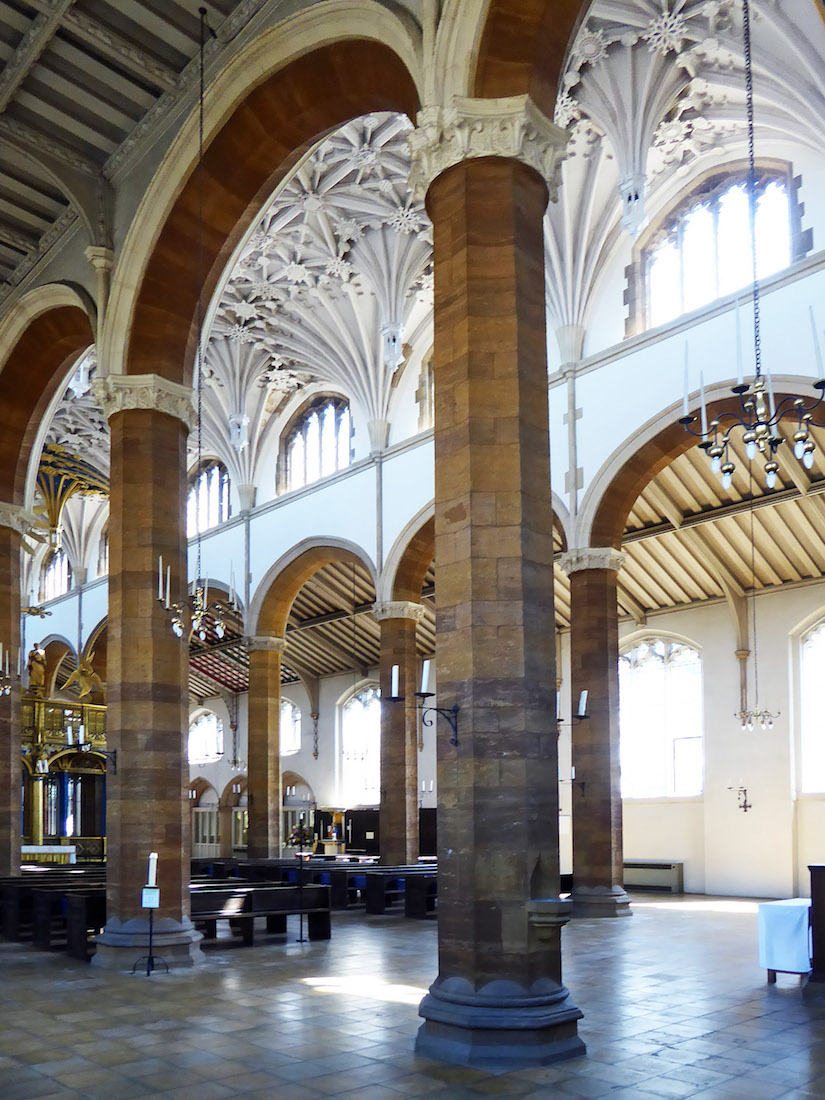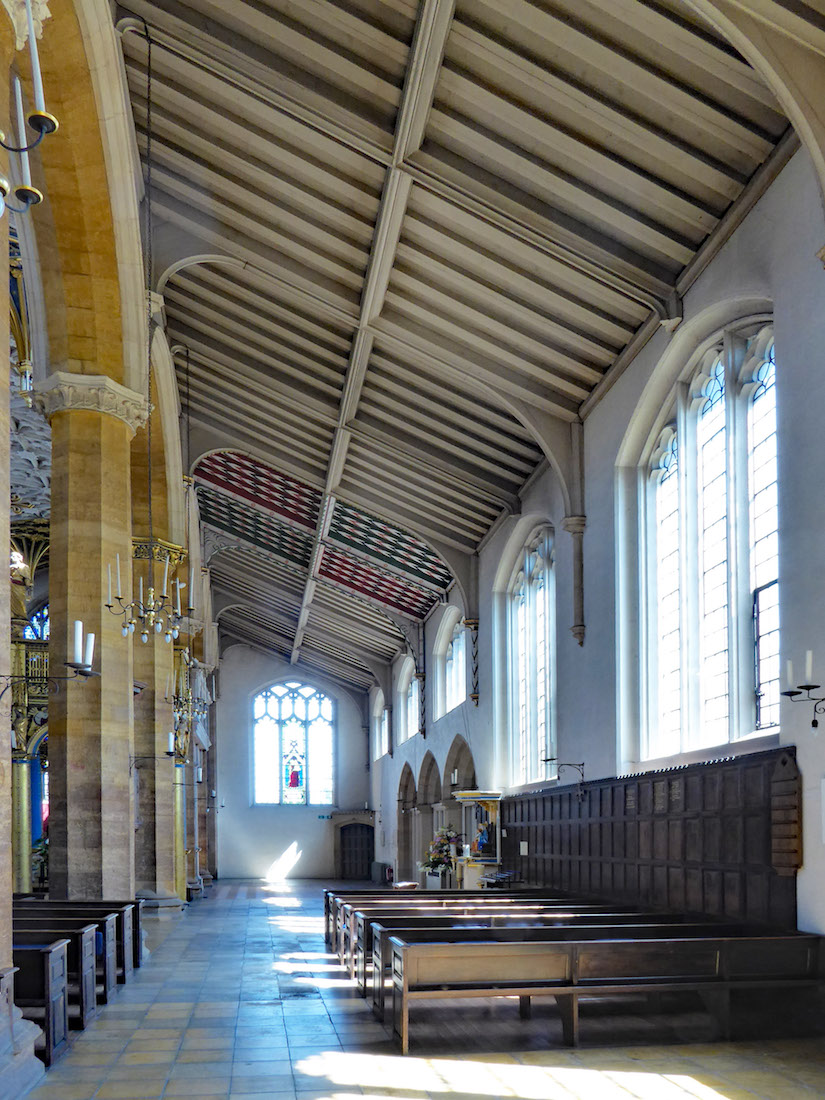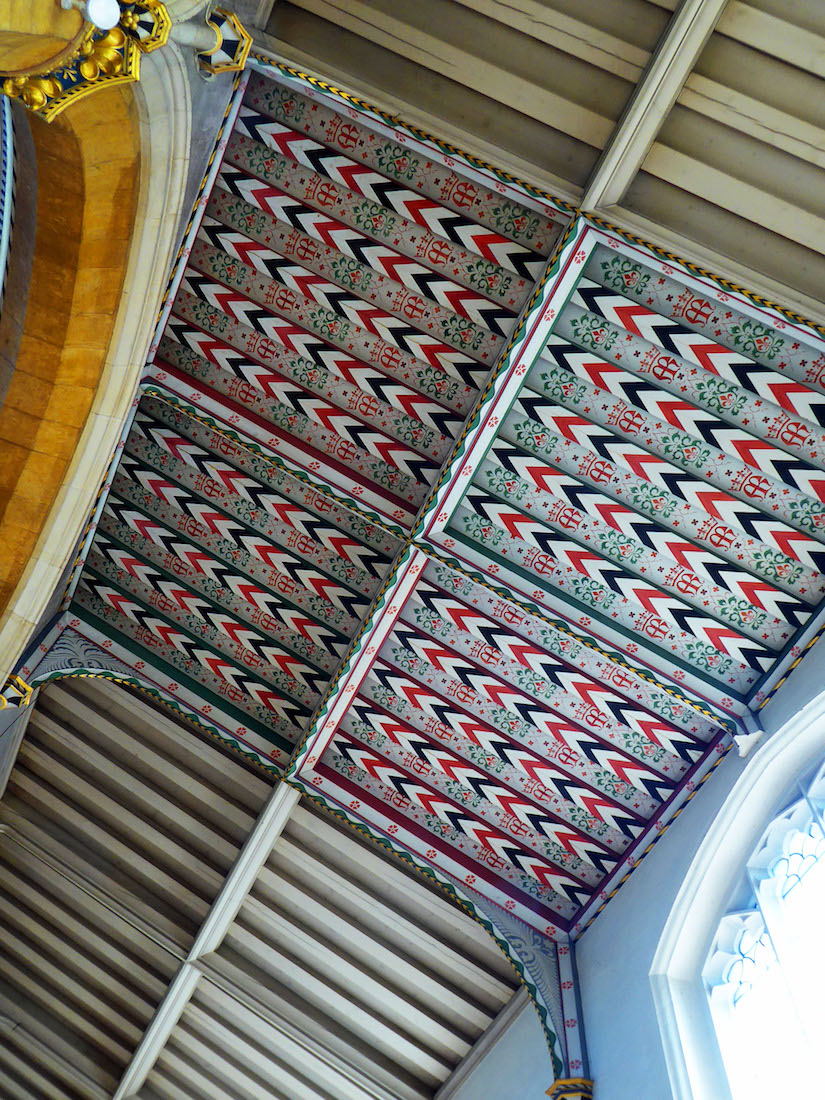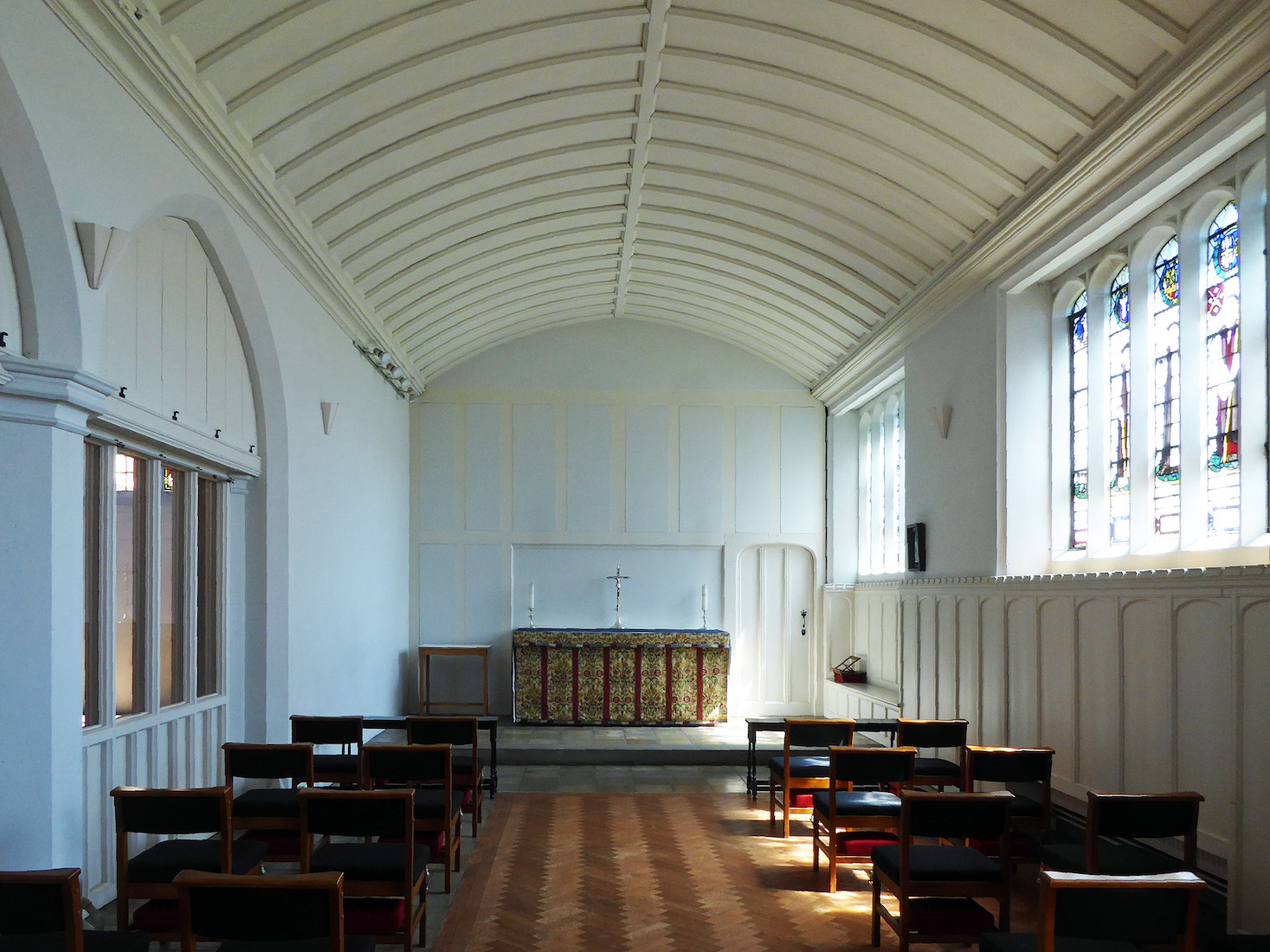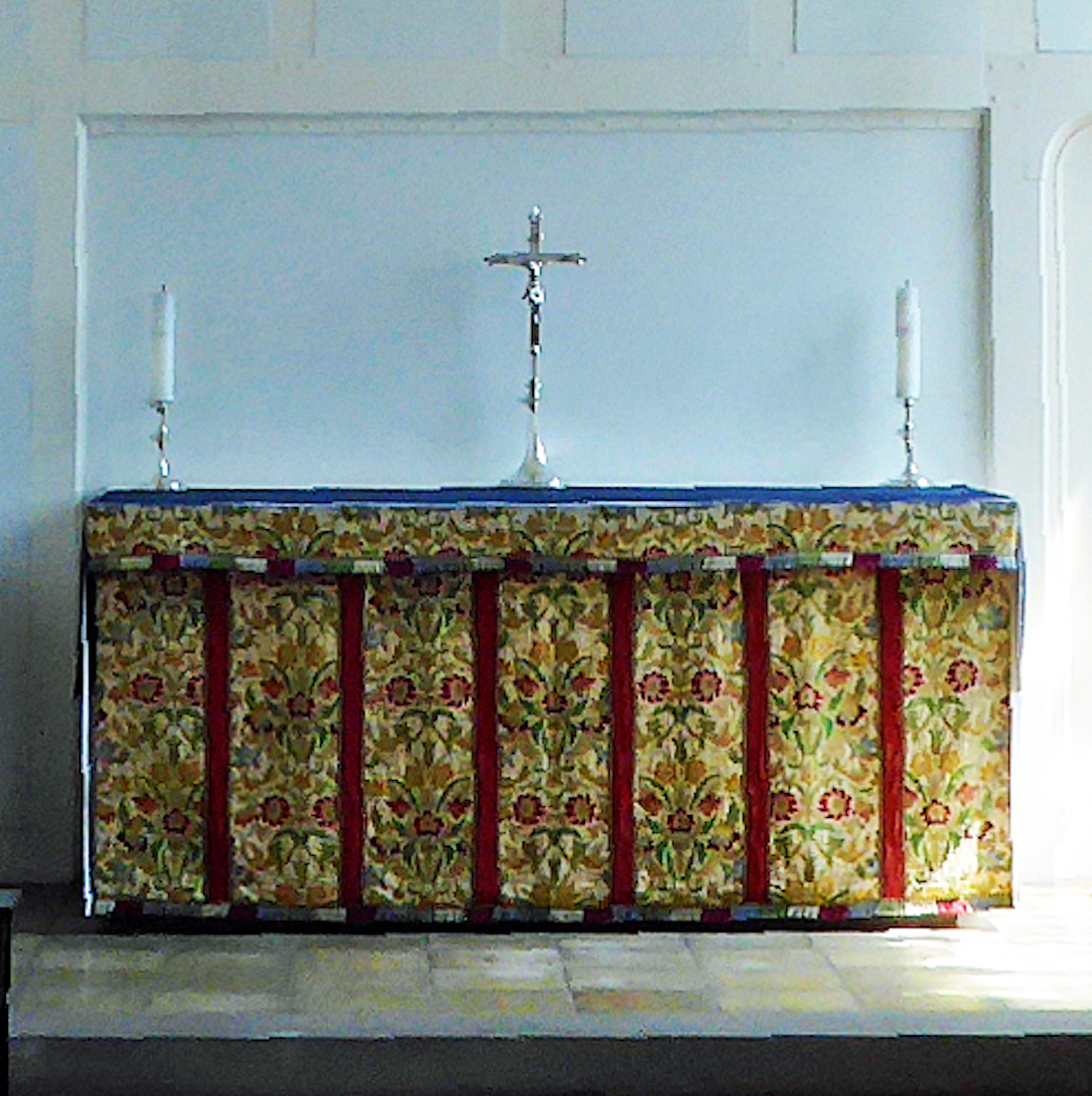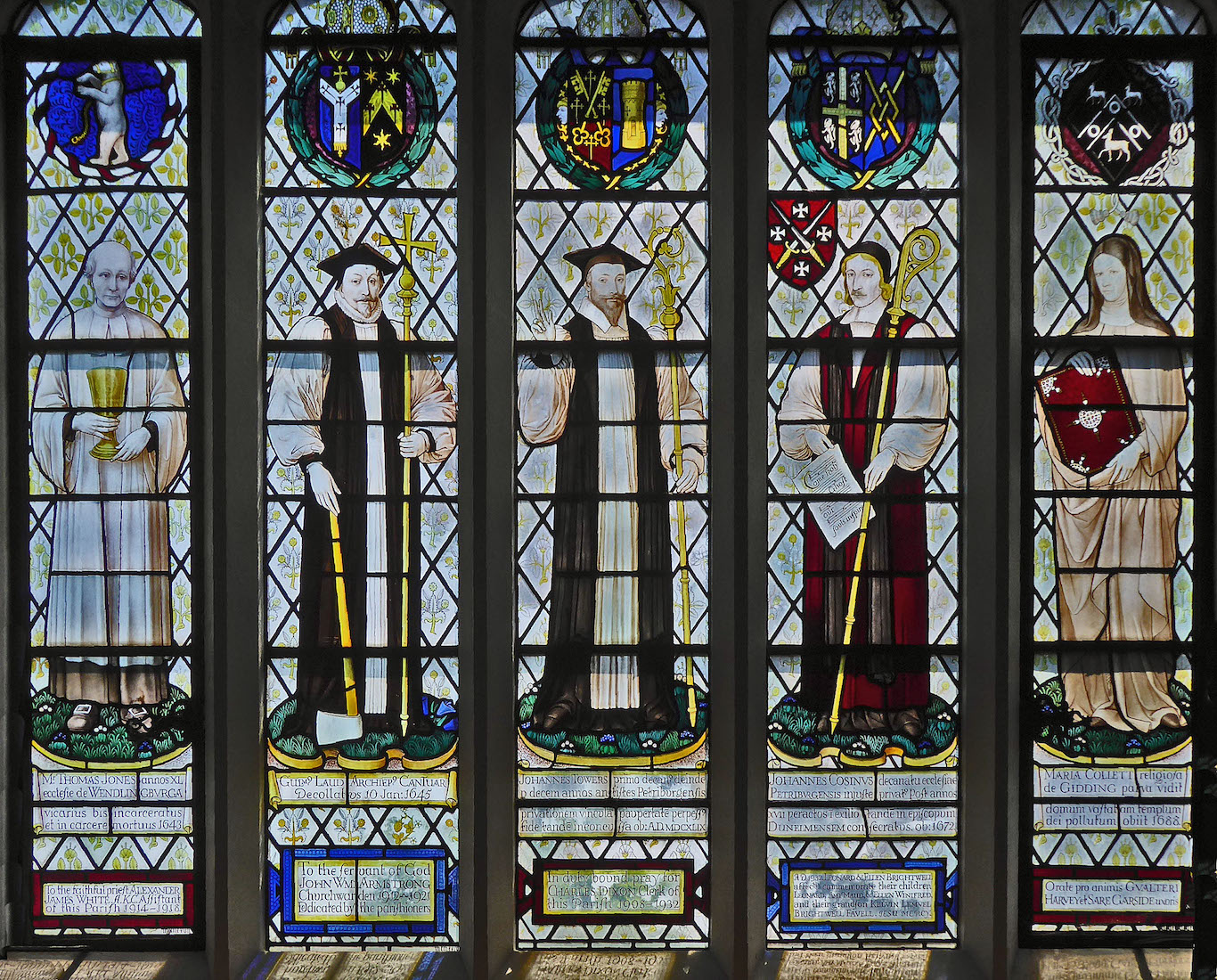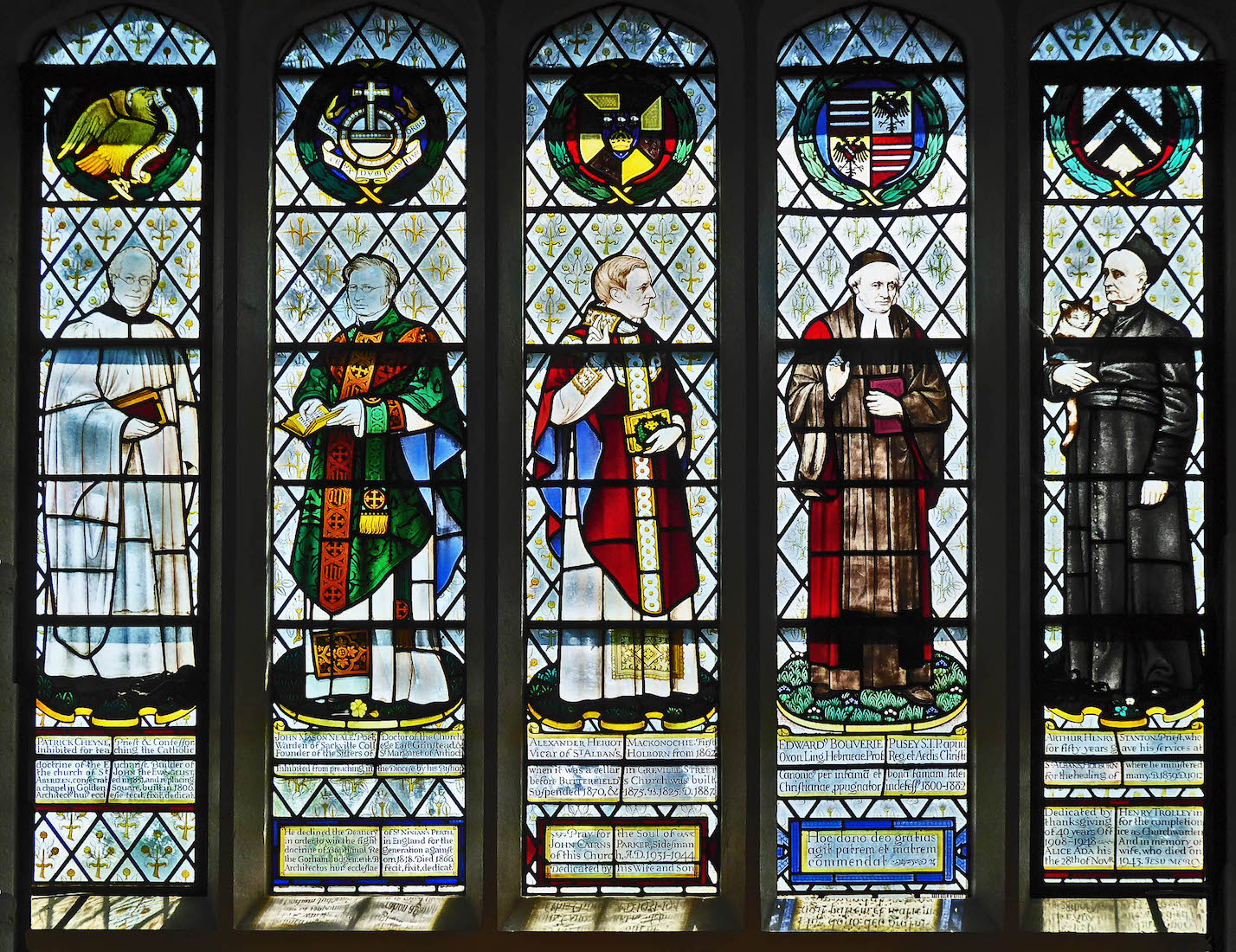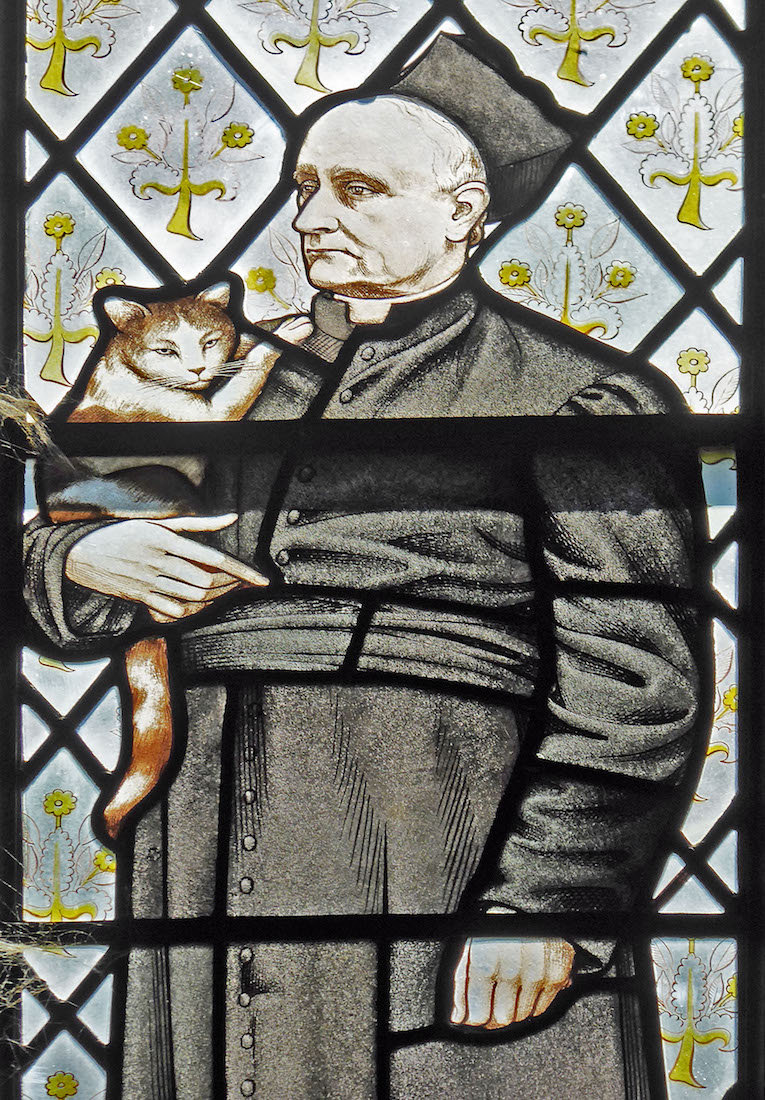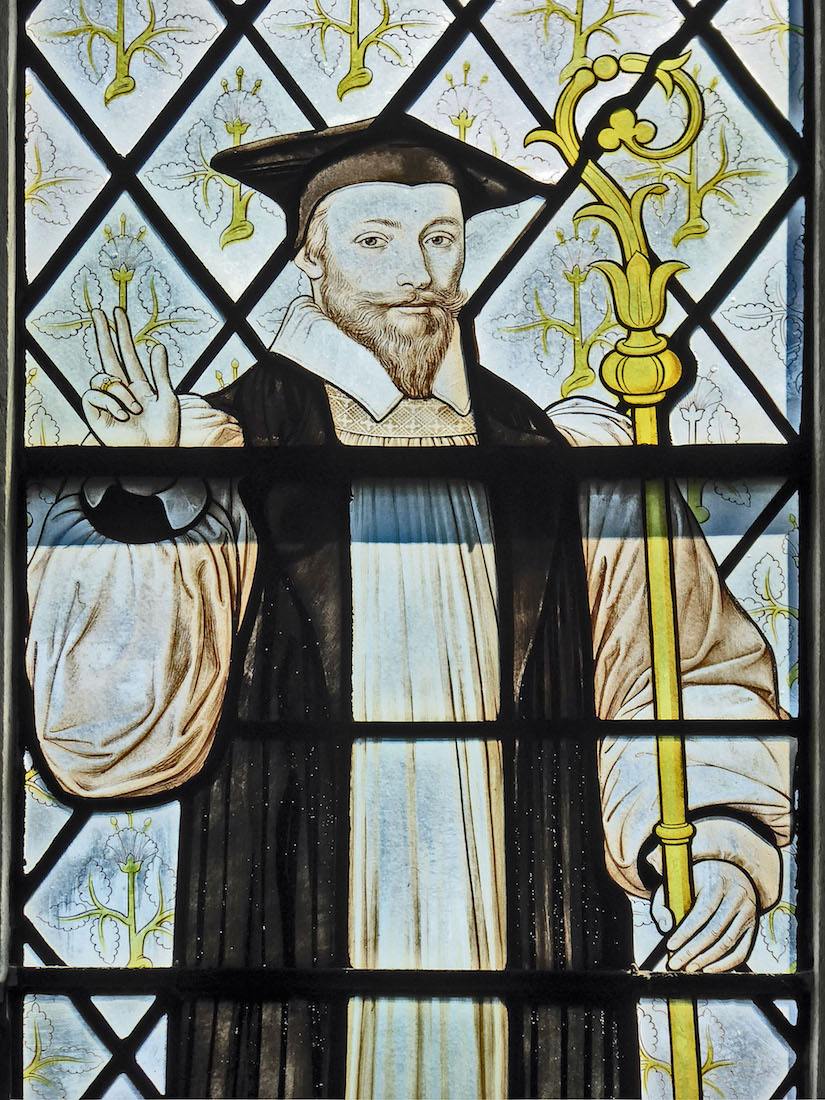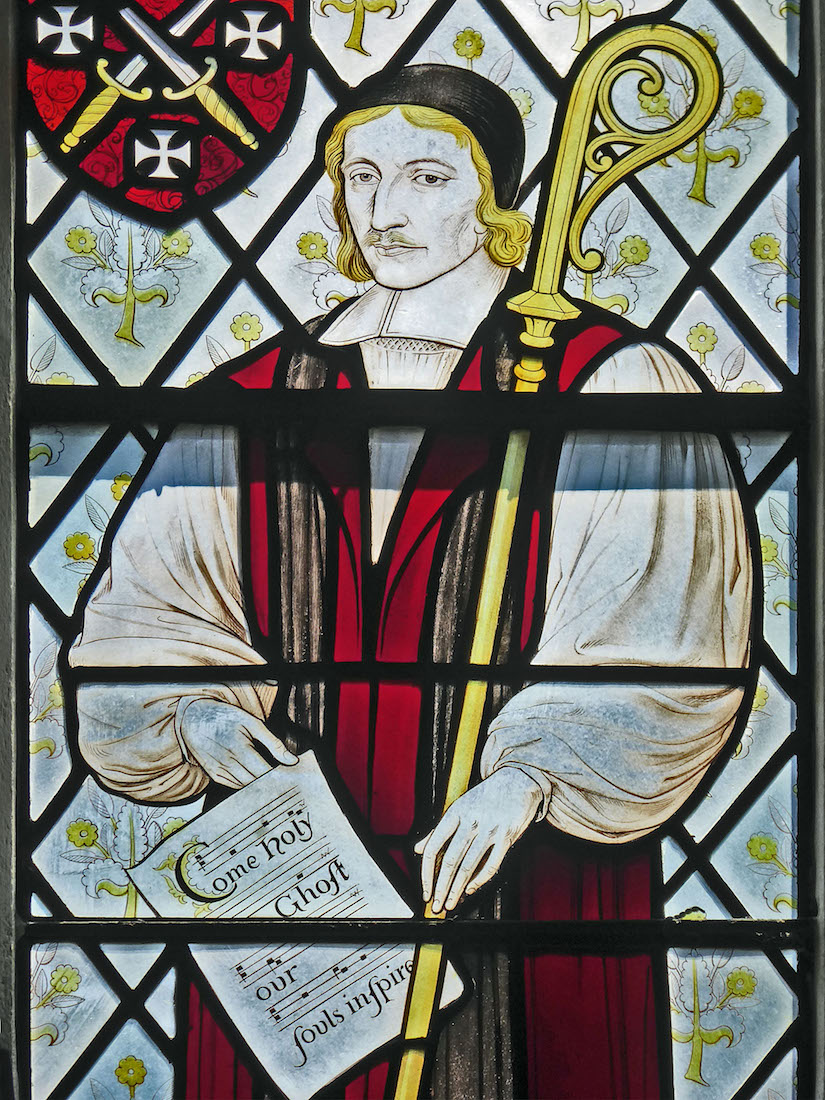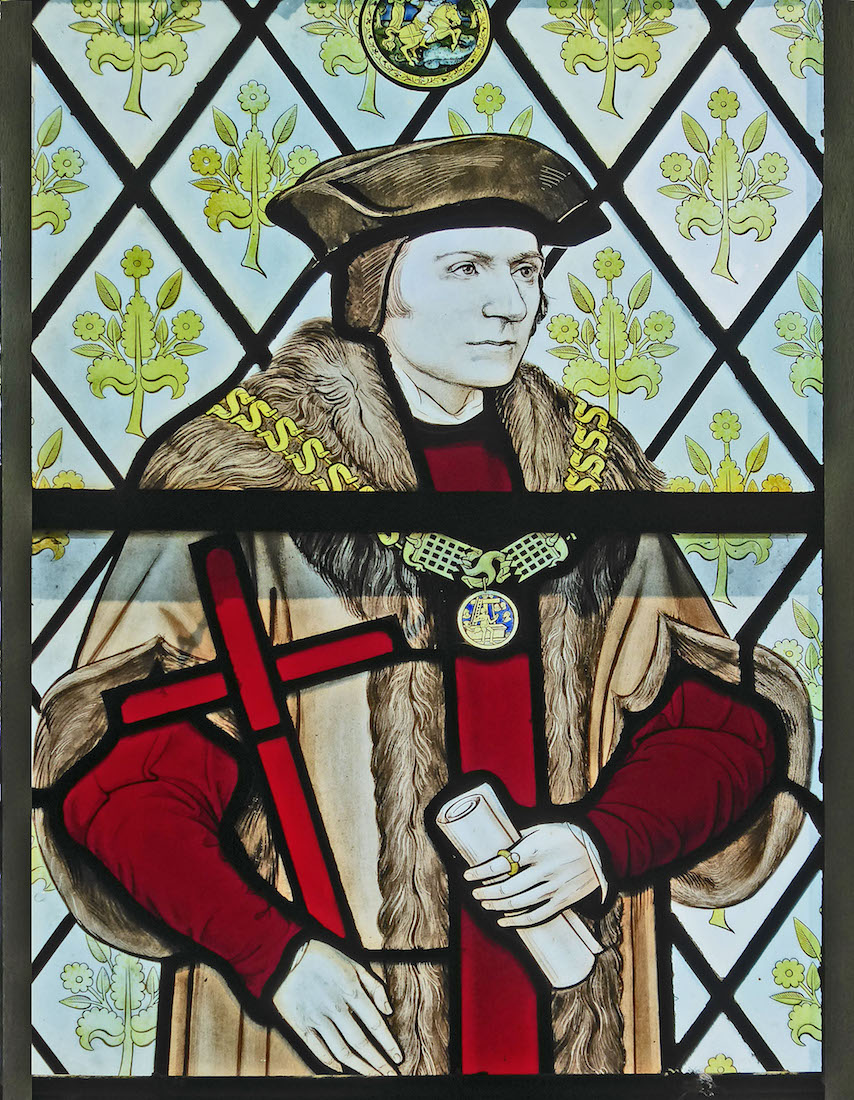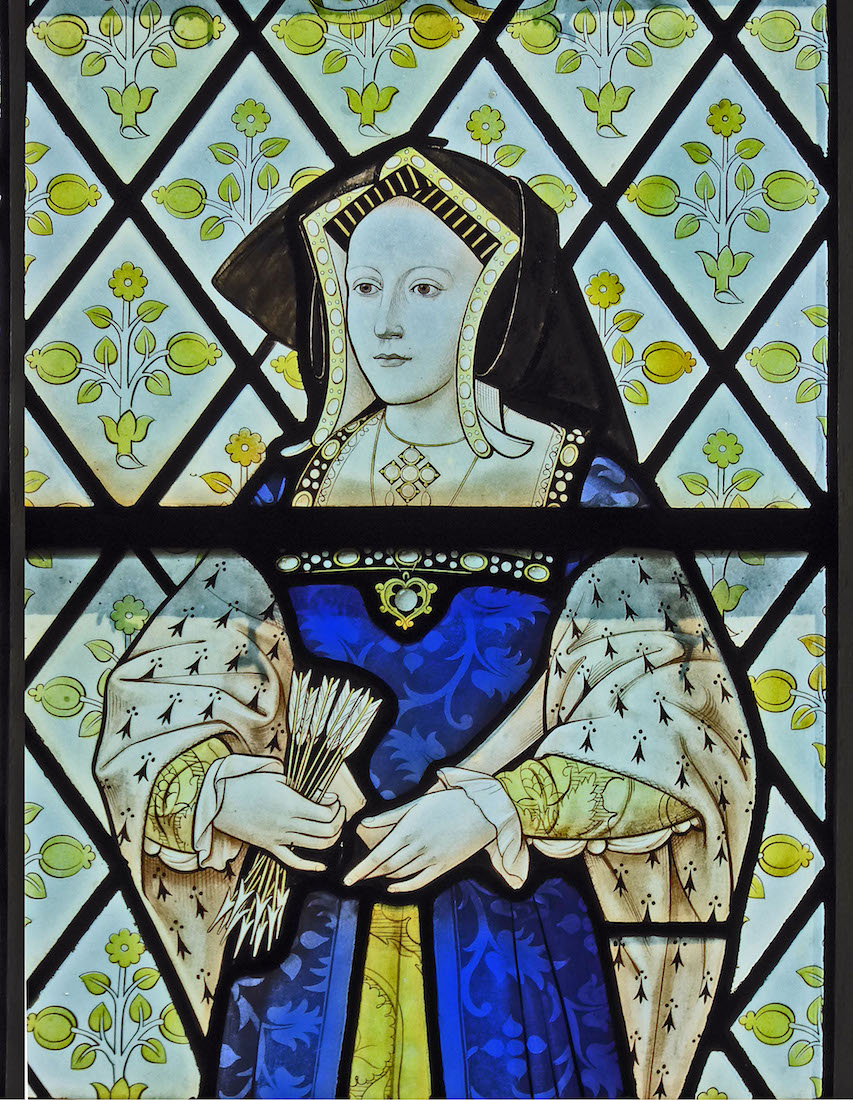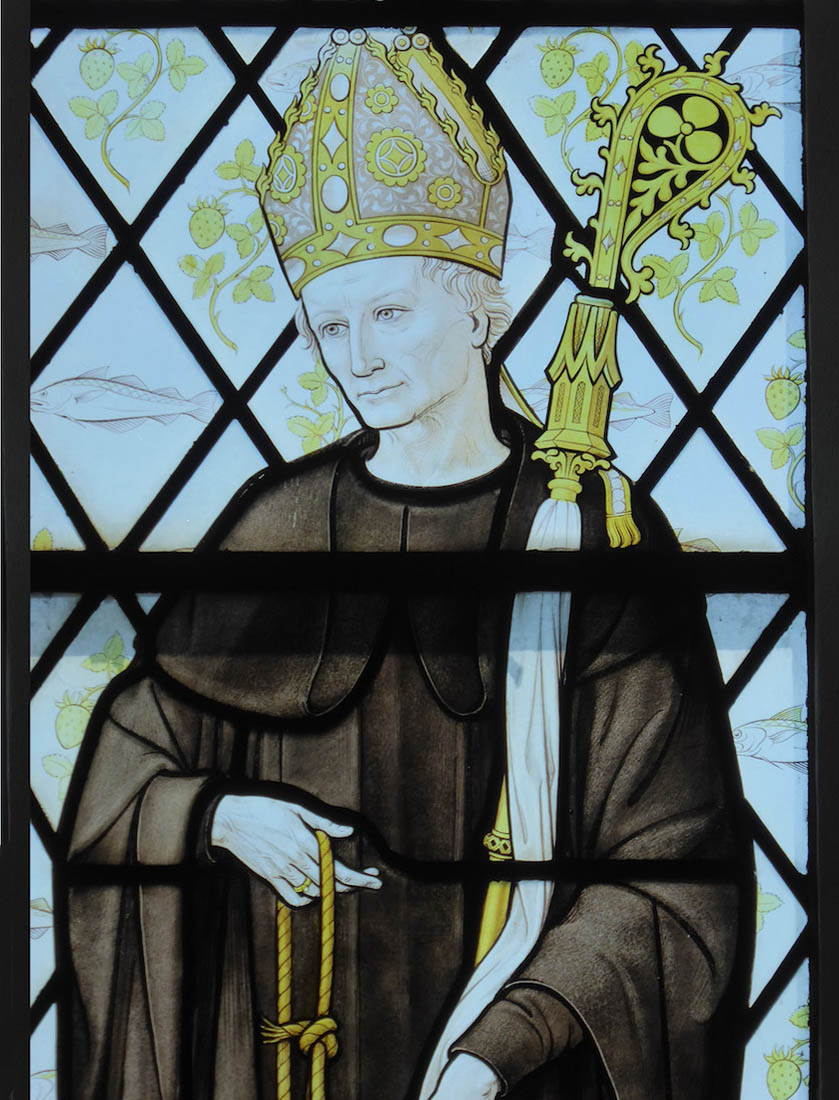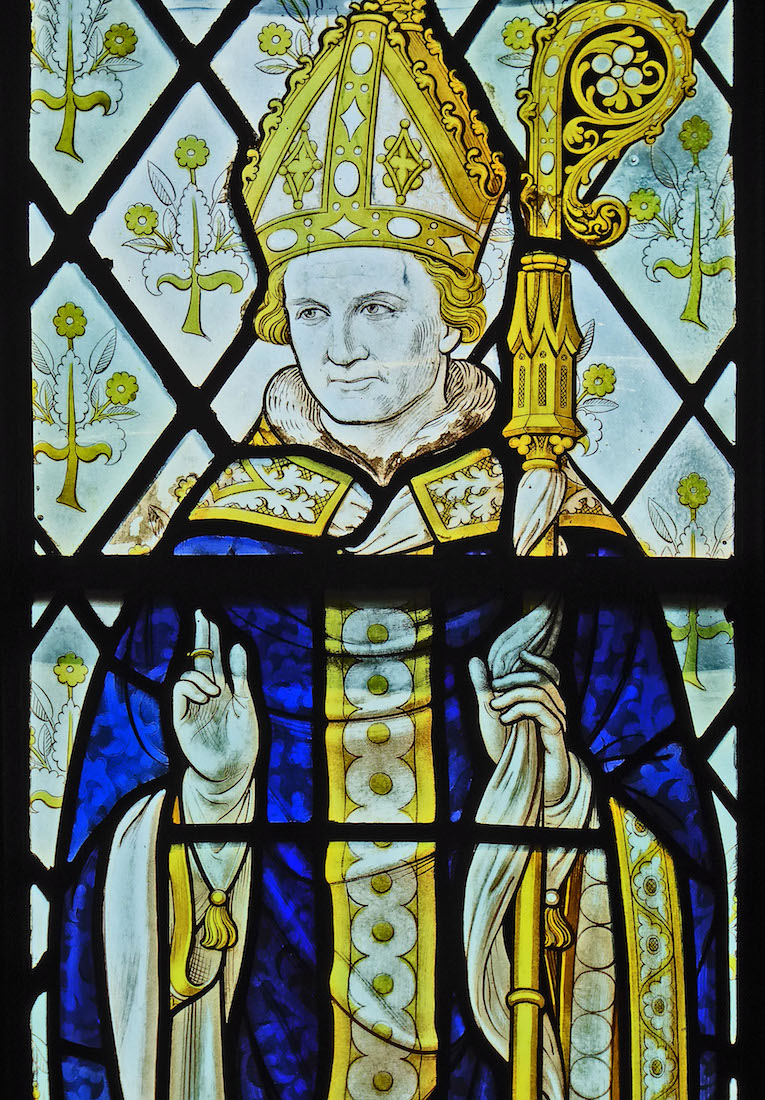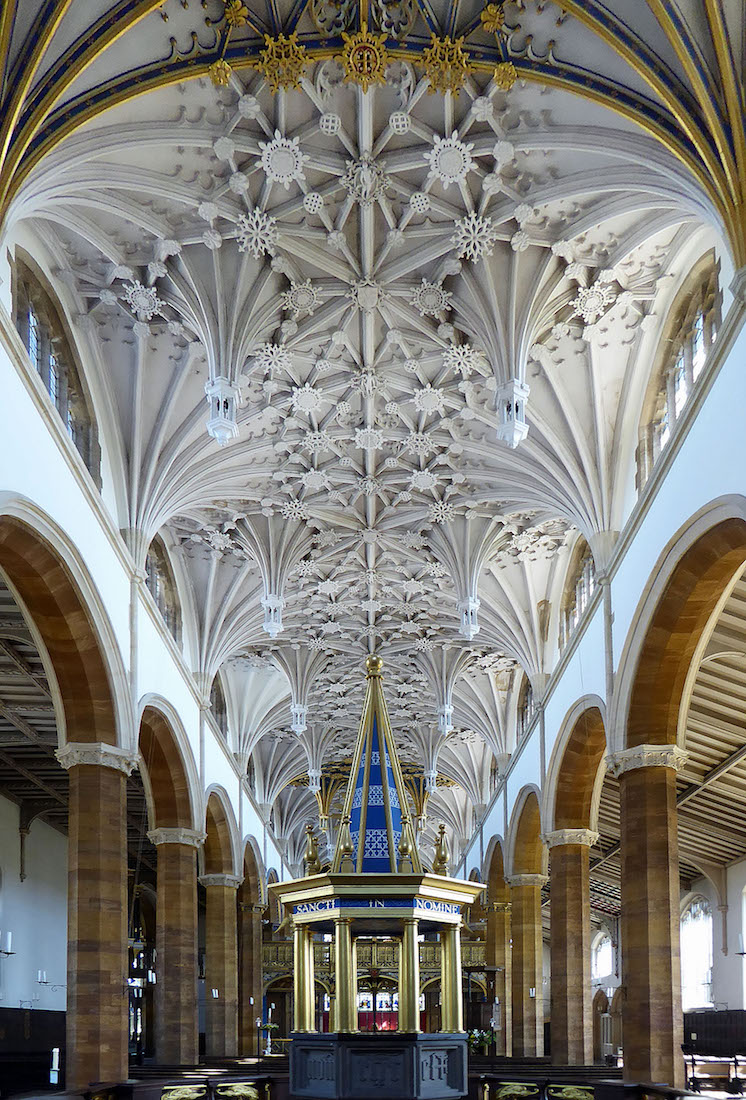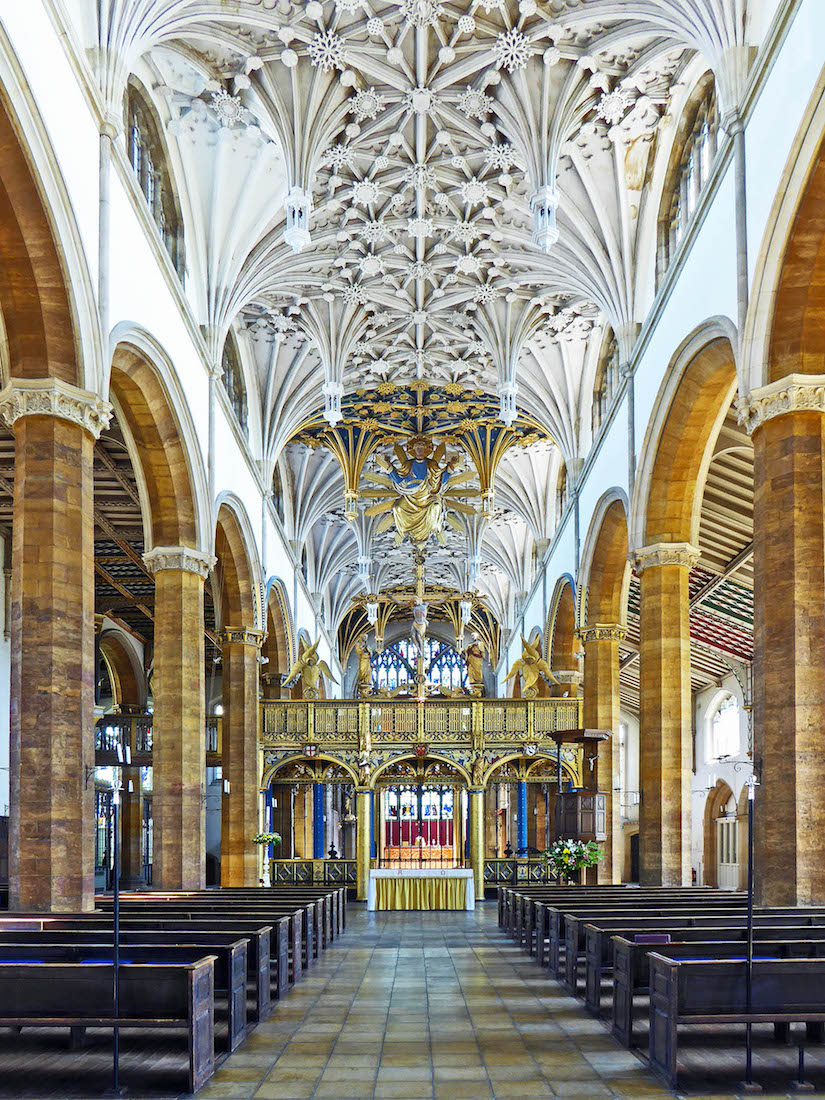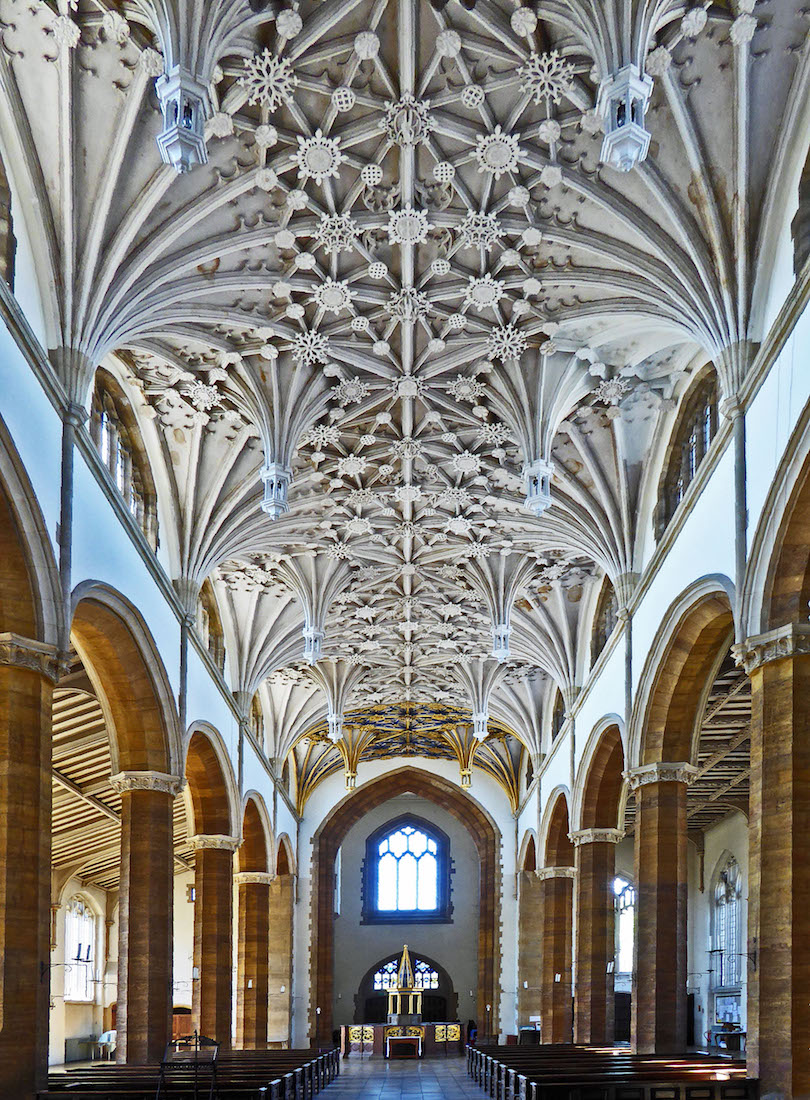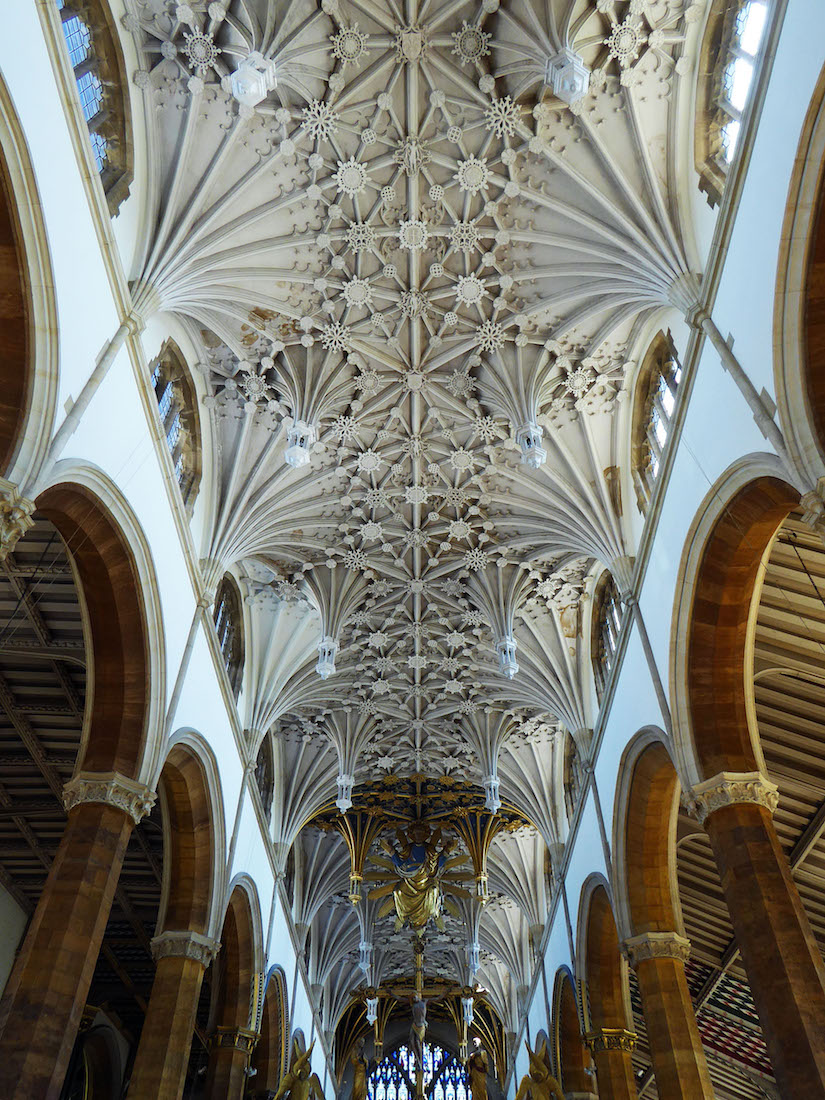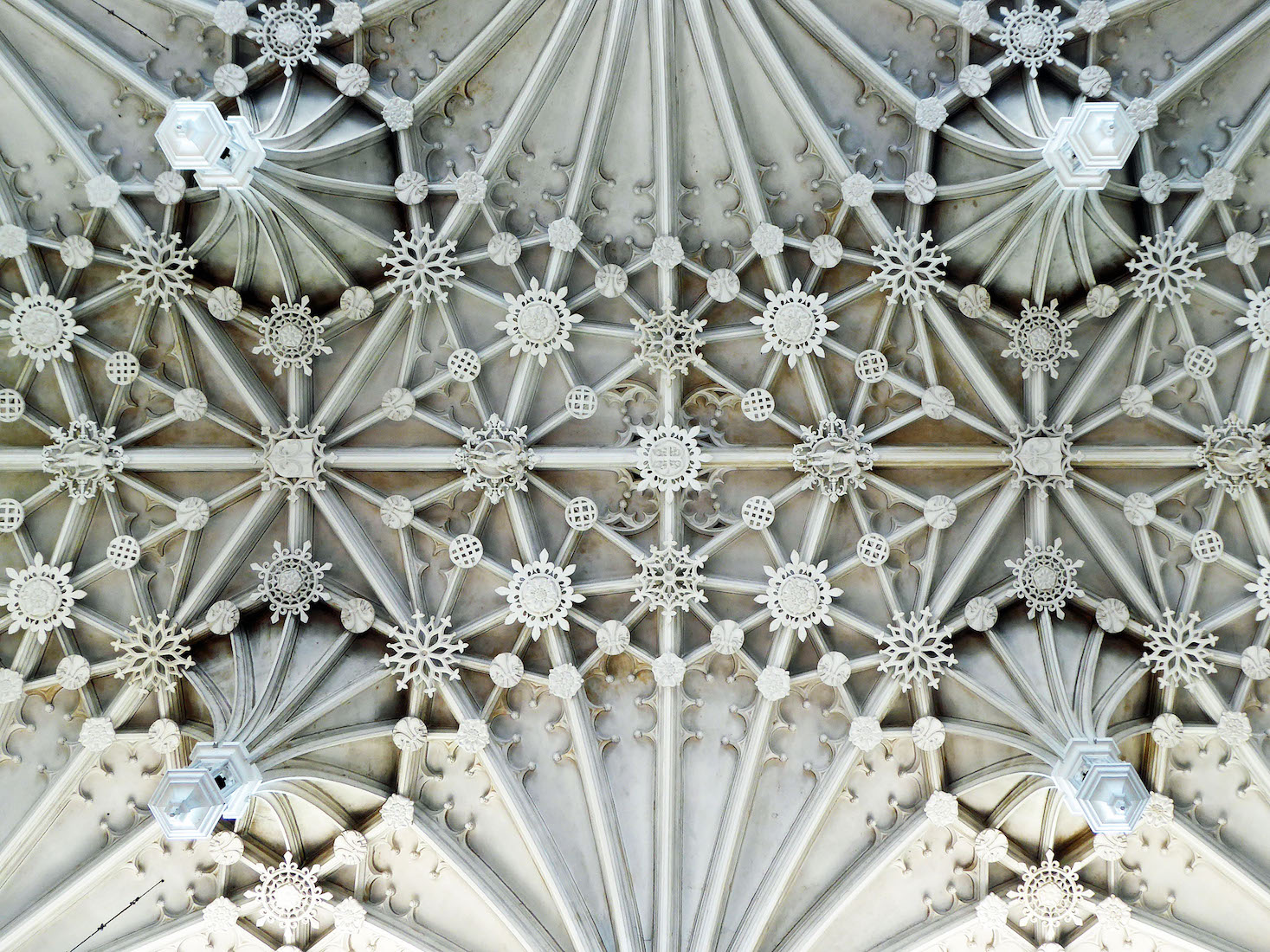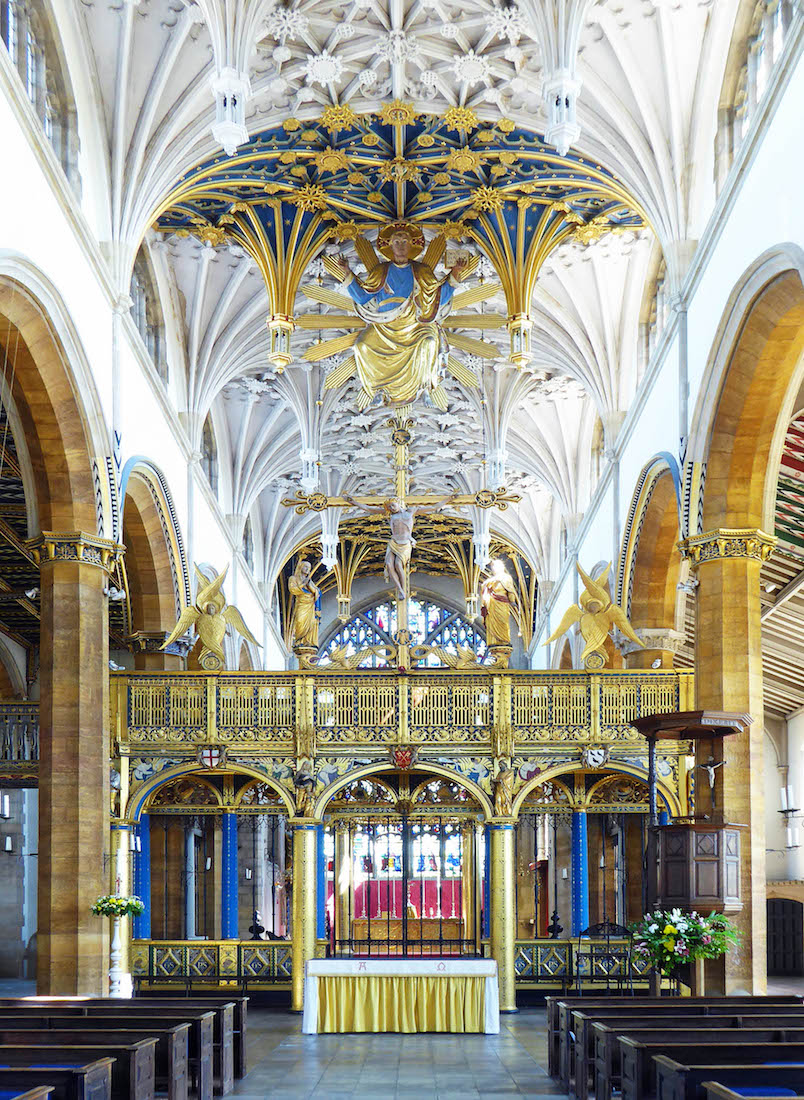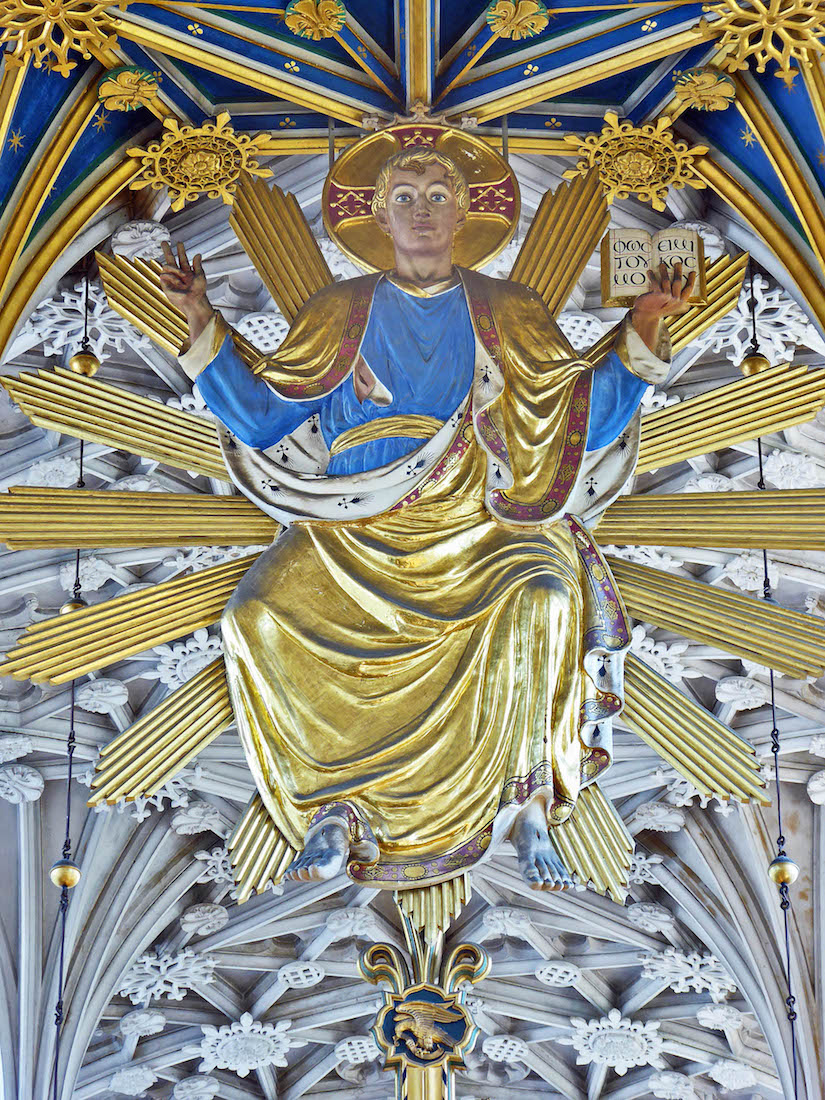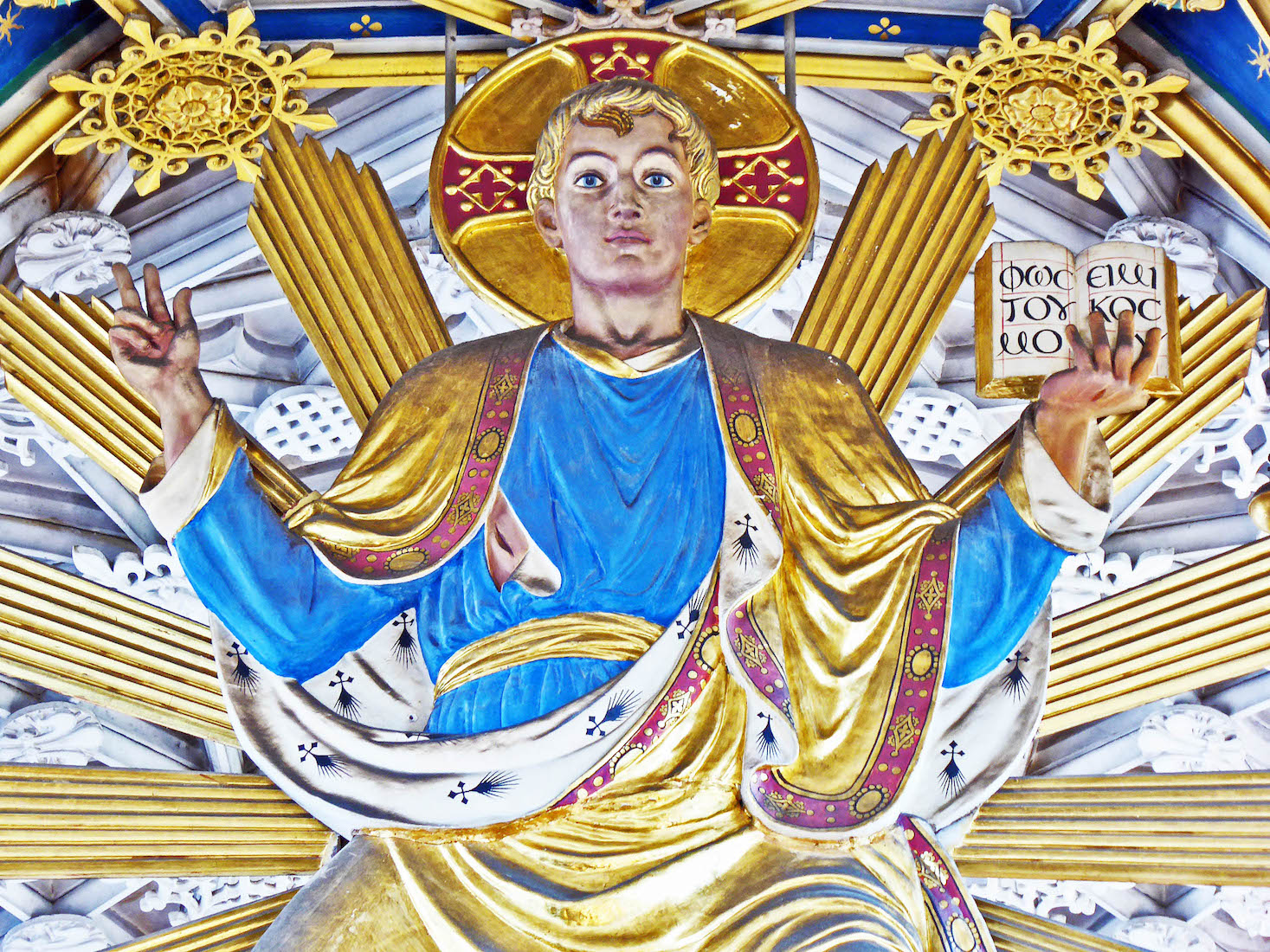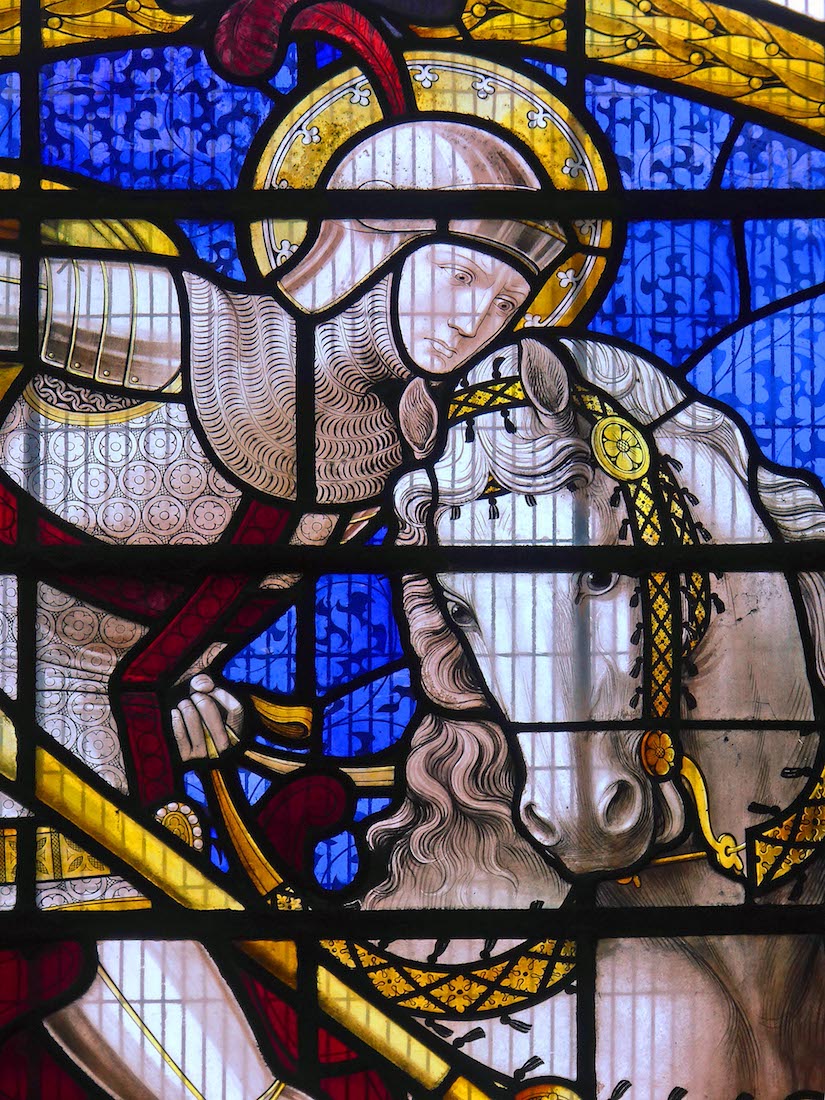
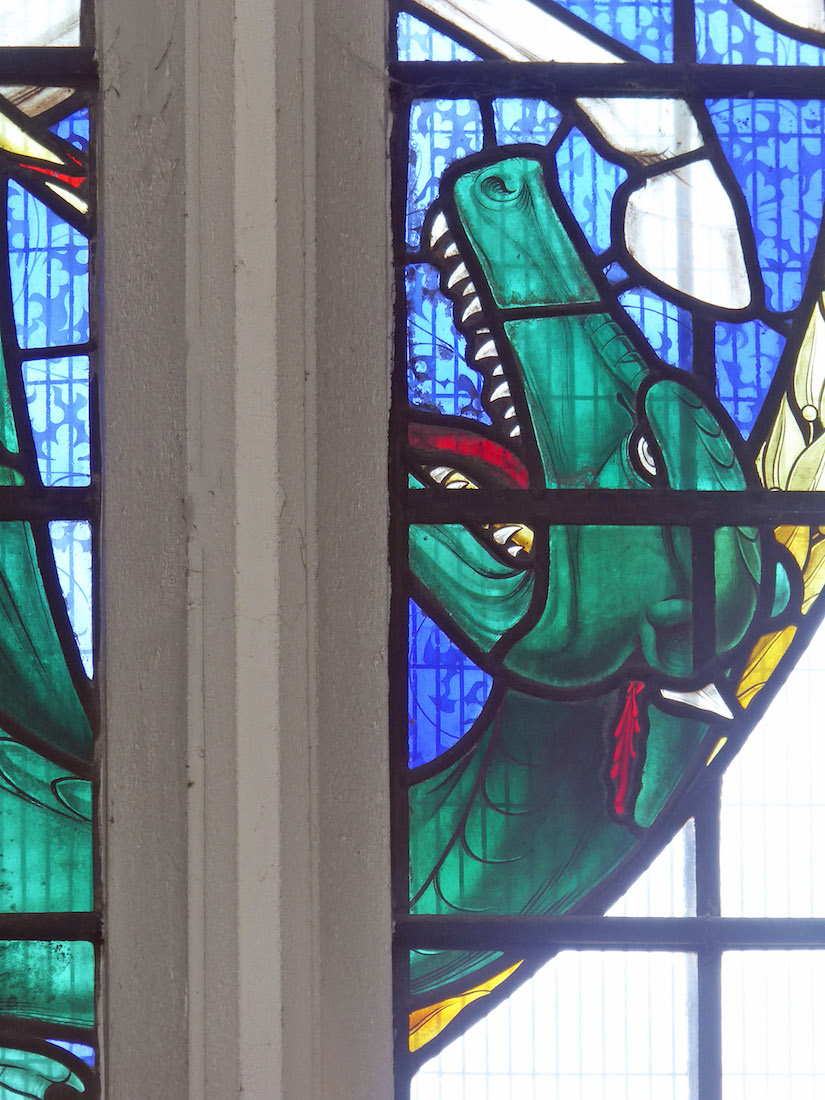
Tradition tells that a fierce dragon was causing panic at the city of Silene, Libya, at the time George arrived there. In order to prevent the dragon from devastating people from the city, they gave two sheep each day to the dragon, but when the sheep were not enough they were forced to sacrifice humans instead of the two sheep. The human to be sacrificed was elected by the city’s own people and one time the king’s daughter was chosen to be sacrificed but no one was willing to take her place. George saved the girl by slaying the dragon with a lance. The king was so grateful that he offered him treasures as a reward for saving his daughter’s life, but George refused it and instead he gave these to the poor. The people of the city were so amazed at what they had witnessed that they became Christians and were all baptized. INDEX
22. NORTHWEST CORNER
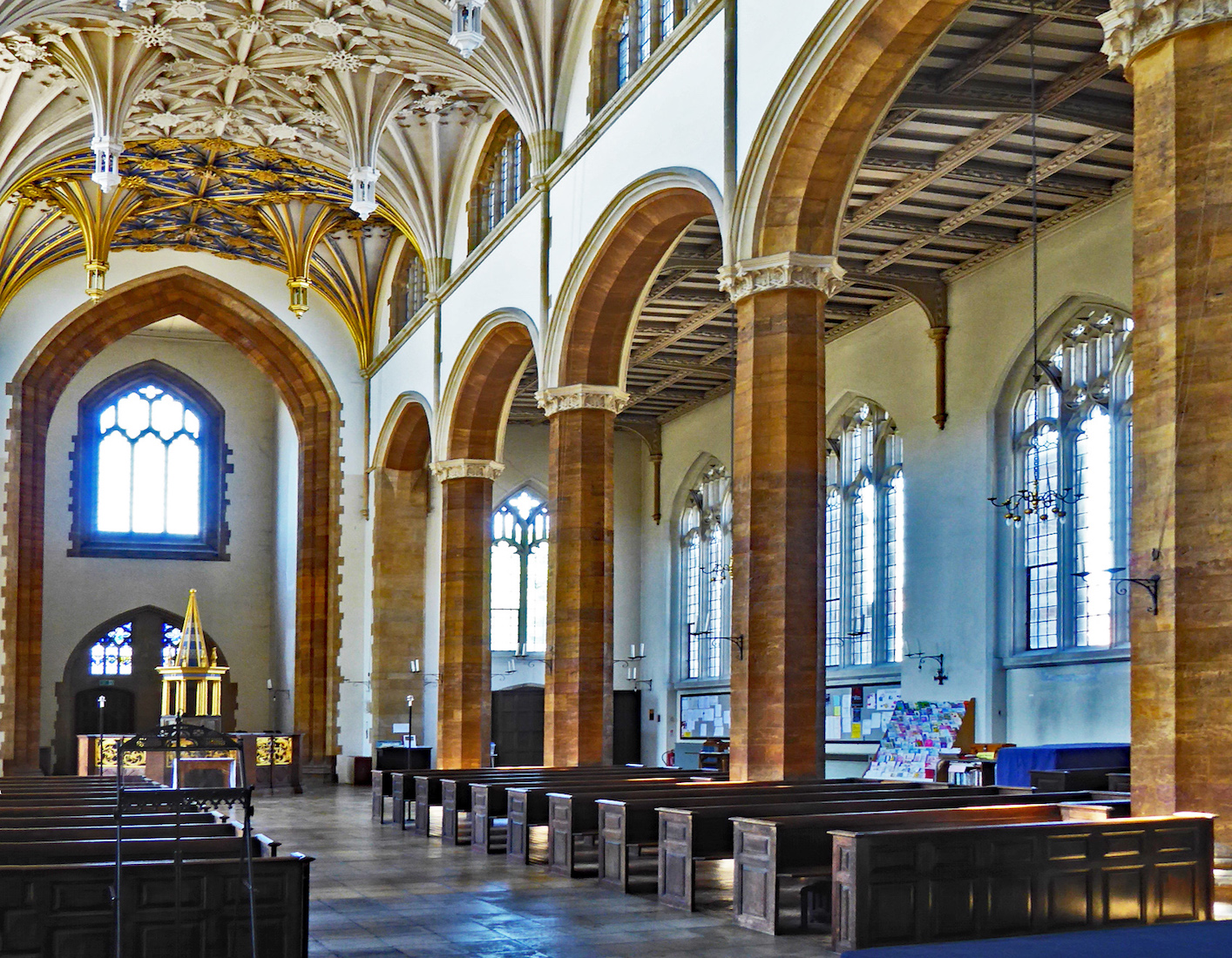
The Northwest corner of the nave is given over to notice boards and stands of cards. At left, just inside the West doors, is the baptismal font. We observe that several of the windows have stained glass insets. A simple modern lectern stands in the foreground.
23. FONT
The font is octagonal, with a painted blue and gold canopy including a tall spire supported on eight small Doric columns. The columns rest on an octagonal base. Sir Ninian Comper was responsible for all the internal fittings and the financing of the work was largely due to the Misses Sharman of Wellingborough.
24. FONT SCREEN
The font is surrounded by an attractive golden dolphin screen
25. FONT VAULTING
Above the font is some brilliantly decorated vaulting – a foretaste of what we shall see above the rest of the nave. I am intrigued by the pendant vaulting seen here: just decoration, or giving some form of support? The style dates from 15th century English Gothic architecture.
26. ACROSS TO THE SOUTH AISLE
Continuing our exploration of the perimeter of the nave, we look across to the South aisle. Above us are the clear clerestory windows, and various candelabra.
27. SOUTH AISLE
We walk down the South aisle. Like the North aisle, this aisle is relatively uncluttered with just a few pews. The doors at far right will lead us through to the Southeast chapel.
29. CHAPEL WINDOW I
There are three of these historically interesting windows which we will show separately. Each figure is carefully labelled. From left here we have: • Thomas Jones, died 1643; • Archbishop William Laud, died 1645; • John Towers, Bishop of Peterborough, died 1649; • John Cosin, Dean of Peterborough, died 1672; • Maria Collett, died 1688.
30. CHAPEL WINDOW II
The second window ... . From left: • Patrick Cheyne, Priest, Architect and Builder; • John Mason Neale, Doctor of Church, Founder of Sisters of St Margaret of Antioch, 1818 – 1866; • Alexander Heriot MacKonchie, Vicar of St Alban’s, 1825 –1887; • Edward Bouverie Pusey, 1800 – 1882; • Arthur Henry Stanton, Healing ministry at St Alban’s, 1839 – 1912.
31. CHAPEL WINDOW III
The third window ... . From left: • Sir Thomas More, Venerated as a Saint, Martyr, died 1535; • Queen Katherine of Aragon, died 1535; • Richard Whiting, Abbot of Glastonbury, died 1538; • Cuthbert Tonstall, Church leader, Royal advisor, died 1559; • David Pole, Bishop of Peterborough, died 1568.
32. VARIOUS SAINTS
These next two pages show some close-ups of various characters in the South side-chapel windows. A predominance of people from Peterborough reflects the fact that this Church is part of the Peterborough Diocese.
33. MORE SAINTS
The windows in this set are quite detailed.
34. FONT AND NAVE VAULTING
We now leave the side-chapel and return to the font at the west end of the nave. Beyond the font we gain a glimpse of the magnificent vaulting of the central nave.
36. NAVE VAULTING
We have already commented on the pendant structures which appear in this vaulting. These are fairly rare in English churches and cathedrals, although they do occur in the King Henry VII Chapel in Westminster Abbey, and in St David’s Cathedral in Wales.
37. VAULTING DETAIL
This is really a study in bosses ... . How much time did craftsmen spend in creating this beauty?
38. CHOIR SCREEN AND ABOVE
There are three parts to this structure at the front of the Church. At bottom is the choir screen, a commonly occurring feature which separates the nave from the chancel and sanctuary beyond. Above this is the rood cross: most often a separate feature suspended from the vaulting. And then at the top is the figure ‘Christ in Majesty’ depicting the Risen and Glorified Christ. All this in a humble parish church!
39. CHRIST IN MAJESTY
This depiction shows a youthful looking Christ with his right hand raised in the traditional gesture of blessing. His left hand holds a book, but I am unable to translate the text. Behind the figure is a golden sunburst.
40. RISEN CHRIST
This figure of Christ leaves a powerful impression with any visitor to the Church. It also relates closely to the Christ figure in the East window of the Northern side-chapel.


